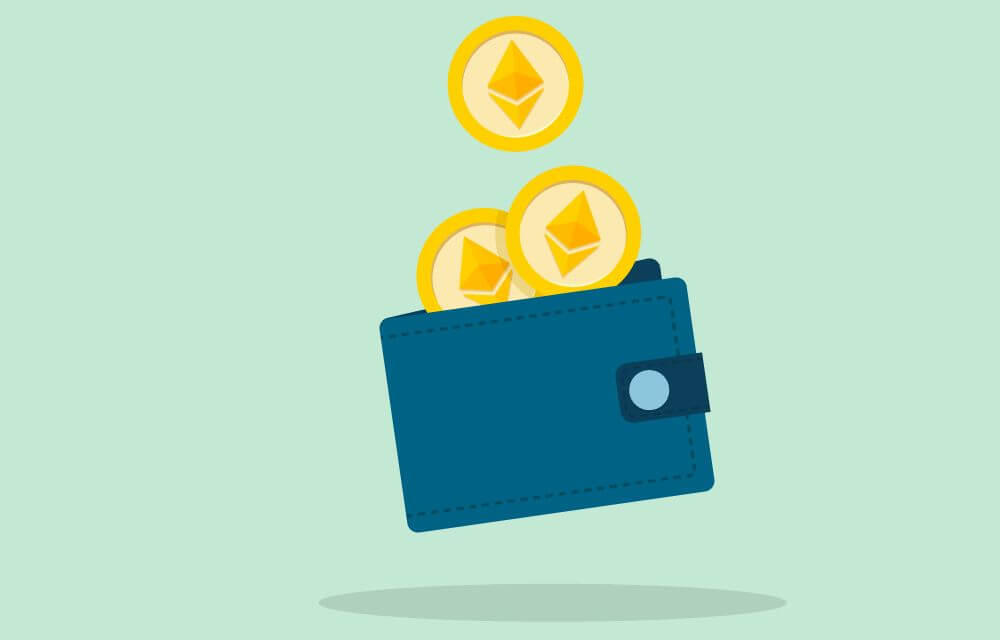Ethereum (ETH)
The foundation of the decentralized economyEther is the world’s second biggest cryptocurrency by market capitalization, and could one day even surpass Bitcoin. In this guide, we’ll explain what ETH is and how the Ethereum blockchain is helping to power the decentralisation revolution.

What is Ethereum?
Ether (ETH), is the native cryptocurrency of the Ethereum network – an open-source blockchain that supports smart contracts. It was the brainchild of Russian-Canadian programmer Vitaly Dmitriyevich “Vitalik” Buterin, who was just 20 years old when he co-founded it along with Gavin Wood, Charles Hoskinson, Anthony Di Iorio, and Joseph Lubin in 2014.

Unlike the Bitcoin blockchain, Ethereum was designed to support decentralised applications, governed by smart contracts. As such, it quickly became the basis for the majority of decentralised finance (DeFi) and NFT (non-fungible token) projects.
However, Ethereum has, to an extent, been a victim of its own success, with network congestion leading to slow and expensive transactions. To address these issues, Ethereum is constantly evolving. As part of this evolution, the network successfully transitioned from a proof-of-work to proof-of-stake consensus mechanism in September 2022 – something unprecedented in the blockchain space.
| Did you know? At the end of November 2021, when Ether hit over $4,640, Vitalik Buterin’s net worth was reported as approximately US$1.46 billion. Source: Forbes |
Ethereum Basics
Although many people refer to Ethereum as a cryptocurrency, it is important to realise that Ethereum is the network, and Ether is its native cryptocurrency.
Ether is divisible to 18 decimal points – ensuring it can remain useful for low-cost transactions for the foreseeable future. The smallest sub-unit of Ether is called a wei – of which there is one quintillion (1,000,000,000,000,000,000) in a whole Ether. Another subdivision, which is used more often, is called gwei, of which there are one billion in a whole Ether.
Many other cryptocurrency projects are also based on the Ethereum blockchain. These crypto projects use ERC-20, ERC-621, ERC-827, ERC-721 (for NFT tokens) and ERC-1155 Token Standards – transaction fees for tokens using these standards must be paid in ETH.
Ethereum Blockchain
Like other cryptos, Ether runs on a decentralised, permissionless network of nodes that create an ever-expanding chain of blocks, known as a ‘blockchain.’ The ledger that sits on the Ethereum blockchain is immutable, meaning it can’t be changed once blocks have been written and added.

Originally, Ethereum used a proof-of-work consensus mechanism to verify blocks. This was similar to that used by Bitcoin, but caused significant issues due to the level of demand on the Ethereum blockchain. Because miners set fees based on a supply and demand model, users often ended up paying excessive transaction fees (known as ‘gas fees’), and waiting times could be long.
So, in September 2022, Ethereum went through what was termed ‘The Merge’. This saw the live blockchain transition from proof-of-work to proof-of-stake in a single day – something that was unprecedented and carried significant risks. In the end, the transition went smoothly, making the network something like 99% more energy efficient, and paving the way for future improvements that should drastically lower gas fees and improve transaction speeds.
Ethereum Mining and Staking
Of course, there were some losers from the Ethereum Merge. Namely miners. Many of these had invested heavily in dedicated ASIC mining rigs and suddenly found themselves redundant. Some of these miners decided to throw their support behind a hard fork of Ethereum, known as ETHW, which would continue to use proof-of-work. However, at the time of writing, its future was uncertain.
Post-September 2022, Ethereum uses a proof-of-stake consensus mechanism. This sees blockchain validators chosen based on the amount of ETH they hold. Because each block is validated by multiple nodes, an attacker would have to control a significant portion of ETH to succeed. Those staking ETH and acting as validators earn passive income, paid in ETH.
Ether Supply
Unlike Bitcoin, there is no hard cap on the supply of Ether. However, in order to counter inflationary pressures, the number issued per day was always limited. Under the proof-of-work system, this was about 13,000 ETH per day to pay miners. However, with the switch to proof-of-stake, only about 1,600 ETH per day were being issued to pay stakers interest of around 5% APY.
Ether Adoption & Usability

The smart contract capabilities of Ethereum have led to it being adopted by many decentralised applications (DApps), especially in the DeFi and NFT spaces. However, the use of Ether as a payment method for non-Ethereum related transactions has been severely hampered by relatively high transaction costs and slow speeds. As previously mentioned, these issues should be addressed by upcoming improvements, but the schedule of those is uncertain.
Ethereum Network Fees & Speed
Precisely because Ethereum is so popular with decentralised projects, the network can get very congested. This often results in slow speeds and high fees (gas fees). The Merge does not directly address gas fees, but the introduction of blockchain sharding, which is planned, should do so.
| Did you know? As of mid-2022, around 50% of all functioning dApps (decentralised applications) on the market were based on Ethereum. Source: Gemini |
Ether Security and Safety
Although some experts consider proof-of-stake blockchains to be inherently less secure than proof-of-work blockchains, most consider the Ethereum network to be sufficiently secure and safe. There are, however, concerns that the potential for power to become somewhat centralised among large validators could make the network vulnerable to manipulation or censorship in the future.
Security and safety tips:
- Don’t leave your ETH on exchanges (unless you’re using it to pay for exchange fees). Use exchanges for buying and selling only. Always transfer your crypto to a local wallet for short-term storage.
- For long-term storage, keep your crypto in a hard wallet.
- Always keep your wallet keys in multiple safe places – they cannot be recovered.
- Never tell anyone about your crypto holdings. No matter how secure your storage is, if you or your loved ones are physically threatened, you’ll probably hand over your personal keys.
Ether Volatility

Like all cryptos, Ether has suffered from its fair share of market volatility of the years. From just over US$1 in mid-215, the crypto surged to more than $1,000 in January 2018, before slumping again to just over $100 by the end of the year. Its most impressive bull run happened between September 2020 and November 2021, when Ether surged from $357 to $4,426. However, by September 2022, Ether had dropped back to around $1,300.
Despite a substantial drop from its November 2021 high, many experts predict a bright long-term future for Ether – primarily because of its importance in the Ethereum ecosphere, which is the main player in the DeFi and NFT space.
| Did you know? Ethereum co-founders Charles Hoskinson and Gavin Wood have since left the project, and founded Cardano and Polkadot respectively – both of which are seen as potential ‘Ethereum killers.’ Source: CNBC |
Final Word on Ether

Quite clearly, in considering Ether as a cryptocurrency, you have to look at the health of the entire Ethereum ecosystem. And, after a successful Merge and transition to proof-of-stake, the future’s looking bright. It seems logical that, as the DeFi, NFT, and wider decentralised economy grows, the demand for Ether will drive prices up.
However, there is still a cloud on the horizon. At the time of writing, the US Securities and Exchange Commission (SEC), was warning that it might classify Ether as a security. This could have major implications for US Ether holders, and also for Ethereum-based projects worldwide. So, if you’re involved with Ethereum, it’s best to keep up with all the latest news.
Similar Cryptos to Ethereum
There are a growing number of potential ‘Ethereum killers’ out there in the cryptosphere. Four of the most promising are Cardano (ADA), Solana (SOL), EOS (EOS), and Polkadot (DOT). All support smart contracts and are newer than Ethereum. However, none have anywhere close to Ethereum’s share of the dApps market, so they’re unlikely to really kill Ethereum anytime soon! Still, they do have their own strong points and are worth checking out.
